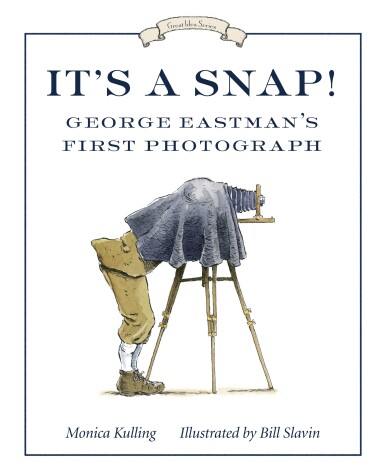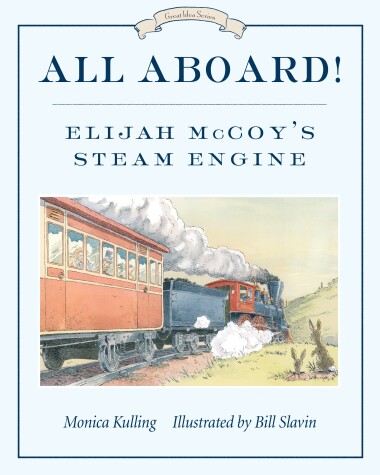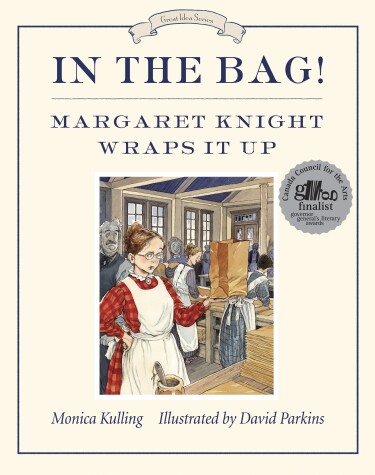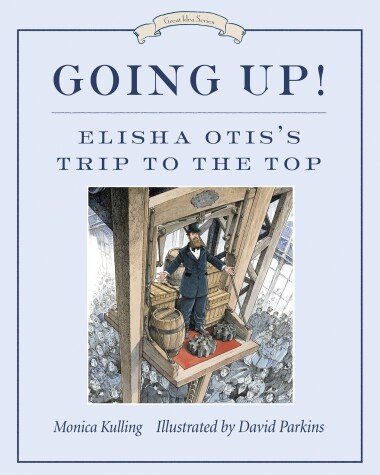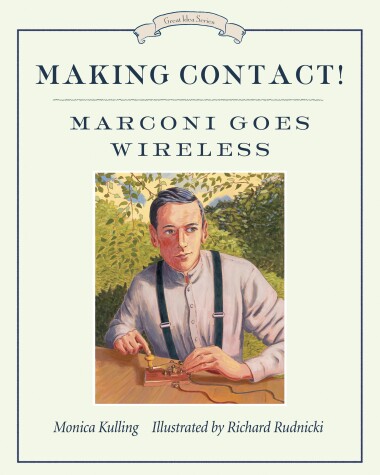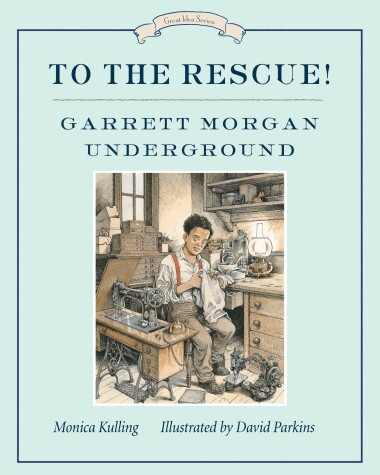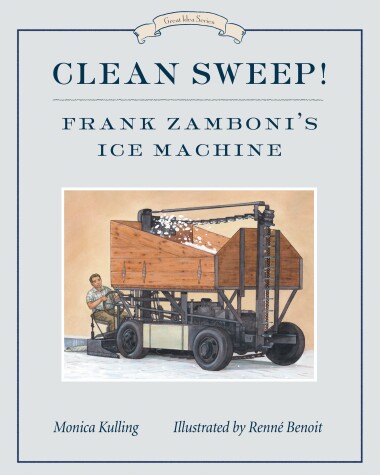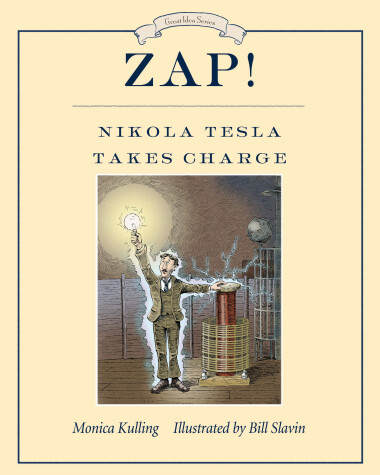Great Idea
10 primary works
Book 1
George Eastman had a new hobby: photography. The year was 1877, and photography was not as easy as you might think. It cost a lot and the equipment was bulky, but George was about to change all that. What he lacked in formal education, George more than made up for in ingenuity: he invented dry plates, film, and the Brownie camera! The rest is history.
For anyone who has ever taken a picture or posed for one, It's a Snap! George Eastman's First Photograph, with its playful, informative text and lively illustrations, is a splendid introduction to biography, to photography, and to the amazing man who had so much to do with putting picture-taking within reach of us all.
Book 2
In the second of Tundra's Great Idea Series, biographies for children who are just starting to read, Monica Kulling presents the life of an extraordinary man. There were few opportunities for the son of slaves, but Elijah McCoy's dreams led him to study mechanical engineering in Scotland. He learned everything there was to know about engines - how to design them and how to build them. But when he returned to the United States to look for work at the Michigan Central Railroad, the only job Elijah could get was shoveling coal into a train's firebox. Undaunted, he went on to invent a means of oiling the engine while the train was running, changing the face of travel around the world. With playful text and lively illustrations, All Aboard! Elijah McCoy's Steam Engine may be the first biography a child discovers, and it will whet the appetite for many more.
Book 3
Tundra's Great Idea Series are early-reader biographies. The third book in the series introduces the fascinating Margaret Knight. Known as Mattie, she was different from most American girls living in 1850. She loved to make things with wood and made the best kites and sleds in town. Her father died when she was only three and by the time she was twelve she was working at the local cotton mill, alongside her two older brothers. One day she saw a worker get injured by a shuttle which had come loose from the giant loom, and the accident inspired her to invent a stop-motion device. It was to be the first of her many inventions. Margaret devoted her life to inventing, and is best known for the clever, practical, paper bag. When she died in 1914 she had ninety inventions to her name and over twenty patents, astounding accomplishments for a woman of her day. Monica Kulling deftly uses easy-to-read language and lots of dialogue to bring an amazing, inspiring woman to life.
Book 4
In 1818, seven-year-old Elisha was fascinated by farm machinery. As a young man, he tried a variety of ways to make a living, but nothing fired his imagination more than the job he found in a bed-frame factory. Soon he invented a machine that made frames four times faster than ever before. In 1852, while overseeing the construction of a new factory, he had to find a way to move heavy machinery to the second floor. He didn't trust the hoisting platform, so he invented a safety brake. It was so successful that rather than lift machine parts, Elisha decided to build "people-hoisting machines." In 1857, Elisha Otis installed his first successful passenger elevator in a five-storey department store in New York City. Before Elisha's invention, buildings were never higher than six stories. At last it was possible to build skyscrapers!
Book 5
Monica Kulling's playful, informative text, combined with the compelling illustrations of artist Richard Rudnicki, bring an amazing inventor and his times to life.
Book 6
Lillian Gilbreth was the subject of two movies (Cheaper by the Dozen and Belles on Their Toes), the first woman elected to the National Academy of Engineering, and the first female psychologist to have a U.S. postage stamp issued in her honor. A leading efficiency expert, she was also an industrial engineer, a psycologist, an author, a professor, and an inventor.
Book 7
To the Rescue! Garrett Morgan Underground
by Monica Kulling and David Parkins
The son of freed slaves, Garrett Morgan was determined to have a better life than laboring in the Kentucky fields with his parents and ten siblings. He began by sweeping floors in a clothing factory in Cleveland, Ohio, where he decided to invent a stronger belt for sewing machines. When he was promoted to sewing-machine repairman, Garrett was on his way. In 1911, 146 workers died in the shocking Triangle Shirtwaist Factory fire in New York City, so Garrett decided to invent a safety hood for firefighters. Little did he know that most people wouldn't be interested in buying his safety hood when they discovered its inventor was black. But an explosion that trapped workers in a tunnel under Lake Erie soon changed all that. Garrett's hoods were rushed to the scene and used to rescue as many men as possible. Developed further, Garrett's invention came to save thousands of soldiers from chlorine gas in the trenches of World War I.
Book 8
Book 8
Tesla and Edison had different views about electricity; Tesla wanted to develop an alternate current while Edison wanted to stick to the direct current system. Edison offered Tesla a large sum to make his direct current system more efficient, but when the work was done, Edison refused to pay. Tesla quit and when things were looking bleak, he met George Westinghouse, who also thought that alternating current was the way to light up America. He gave Tesla a job and in 1896, Tesla and Westinghouse built a generator at Niagara Falls that was able to send power as far as Buffalo, New York.
Book 8
Now in paperback. Meet Frank Zamboni, whose determination and persistence led to his invention of the now-famous Zamboni ice-resurfacing machine.
When Frank Zamboni, along with his brother and cousin, opened their own skating rink in 1940 in Paramount, California, it could take an hour and a half for a crew to resurface the ice. They had to level the surface by shaving down the pits and grooves with a tractor, remove the shavings, wash the ice and find a way to give the rink its shining finish. Skaters became exasperated with the wait, so Frank was determined to do something about it. Could he turn a ninety-minute job for five men into a ten-minute task for only one? Working in the shed behind his ice rink, Frank drew designs and built models of machines he hoped would do the job. For nine years, he worked on his invention, each model an improvement on the one before. Finally, in 1949, Frank tested the Model A, which "cleaned the ice in one sweep around the rink." The rest is history.
